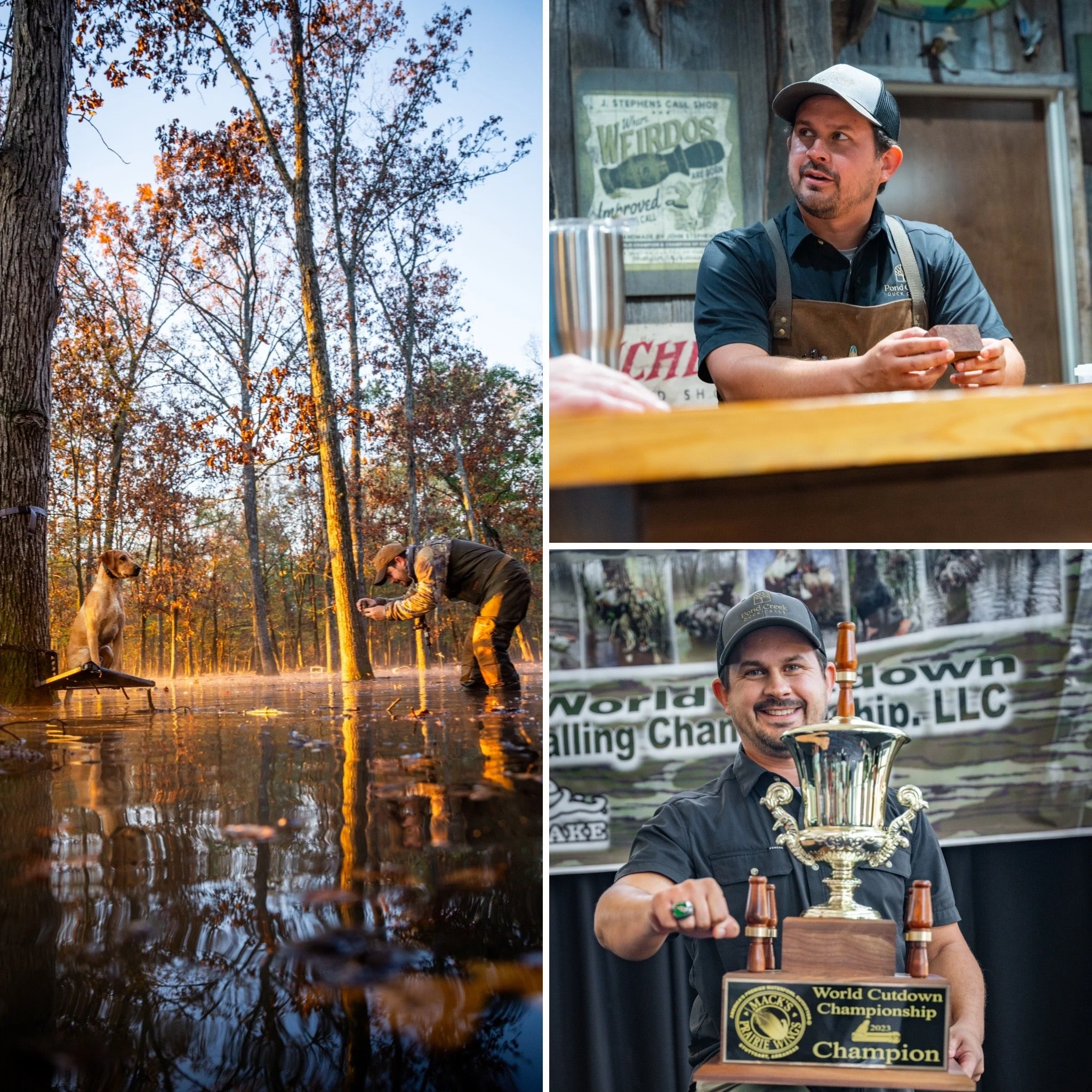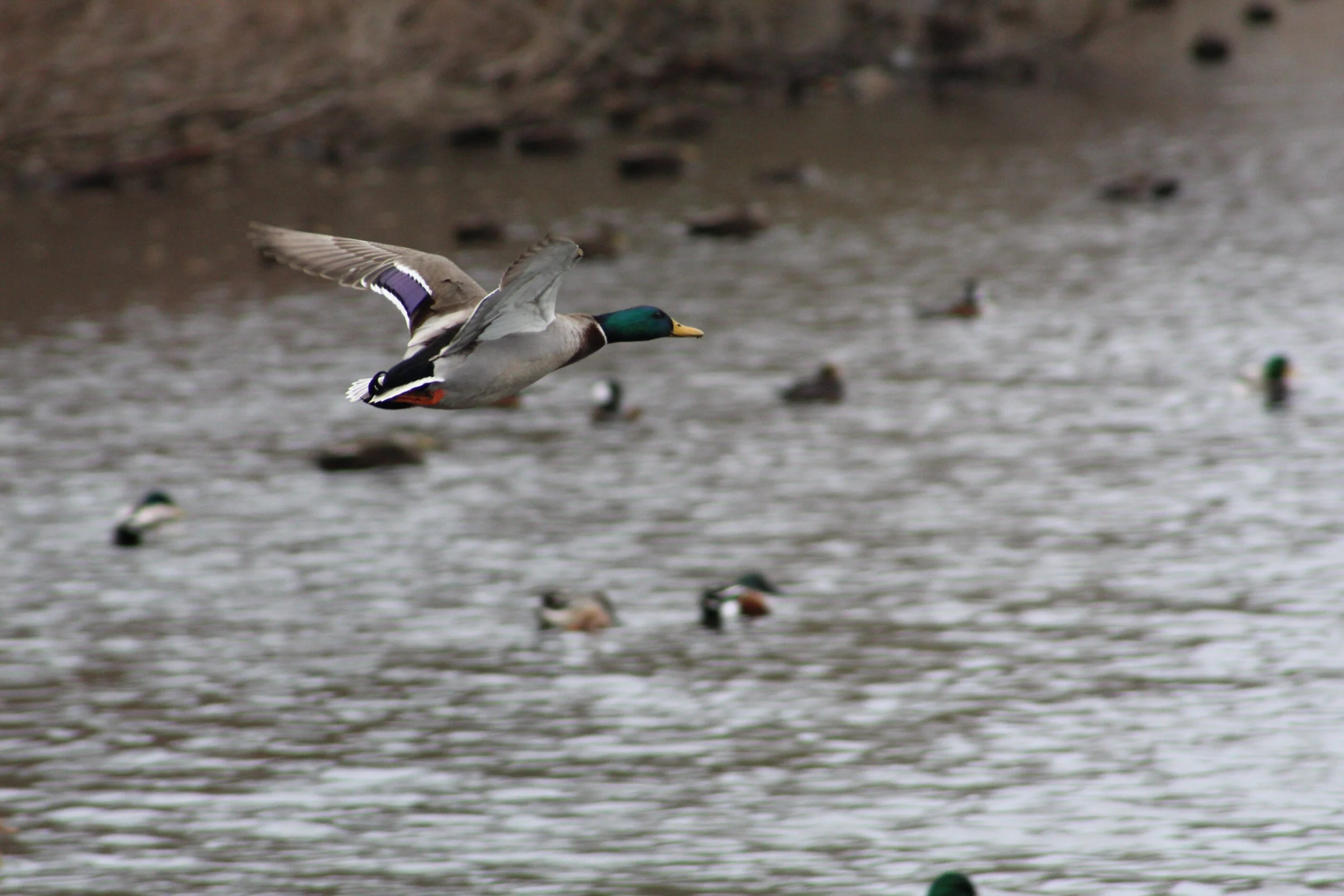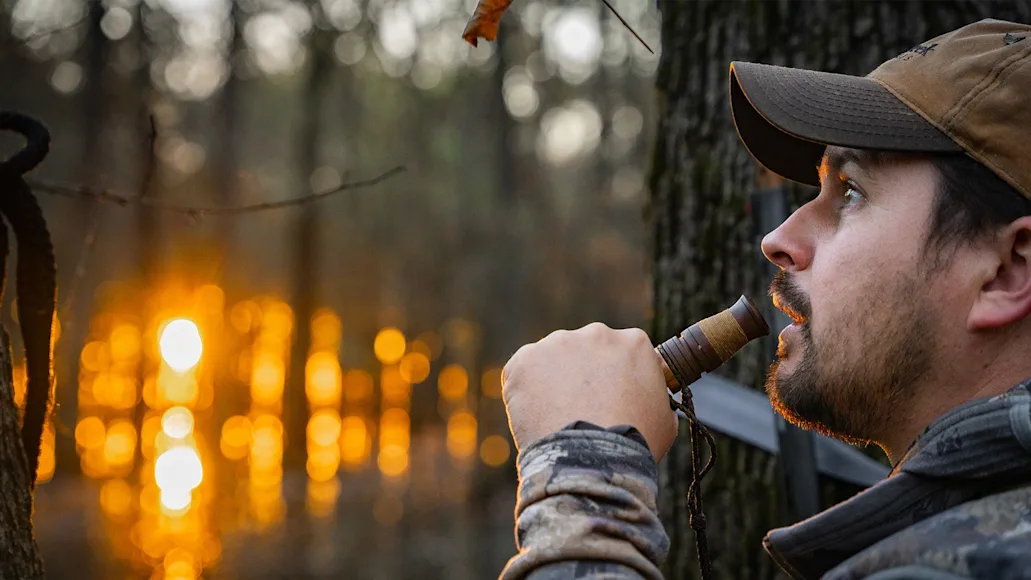In July of 2023, Forrest Carvajal was crowned the “King of the Cutdown” at the Delta Waterfowl Expo in Little Rock, Arkansas. He topped 58 competitors on his way to winning the world championship of this specialized duck calling competition, which involves using a particular type of high-volume call. And even though Carvajal doesn’t consider himself a “cutdown guy,” it is clear that he can blow a duck call better than most.
A year before winning the world cutdown championship, Carvajal started Pond Creek Duck Calls, offering custom calls tailored to each client’s calling style and ability. He posts an almost weekly “Tune-Up Tuesday” on social media
, where he offers tips and tactics to improve your duck calling.
While he already has one world championship title under his belt, Carvajal is determined to add to his resume. In the meantime, he continues to make beautifully hand-crafted duck calls, offer his knowledge of sport, and hunt ducks with family and friends. I had the chance to sit down with Carvajal and talk to him about his championship, business, and calling tactics.

Clockwise from left: Carvajal takes a photo of his young yellow lab, Owen, in the flooded timber of Arkansas; Carvajal sits at the carving bench; Carvajal with his world championship trophy and ring. Matt Covington
Q: What was your first duck call, and when did you start hunting?
I started duck hunting when I was 11 years old in Texarkana, Arkansas, with my grandfather, who taught me how to hunt. I can’t remember the exact model of my first call, but it was a Sure Shot double-read. I blew the lights out of that call, just trying to learn. Being able to call and talk to the ducks was my biggest draw to duck hunting.
Q: What is a cutdown call?
In the World Cutdown Championship, a call has to meet specific measurements to be classified as a “cutdown.” At its core, a cutdown is a modified call that will predominantly have a 14-millimeter-thick reed. The reed and tone board—which will have an upslope—will typically be longer than the ones in J-frame calls. This allows you to dump a lot of air into the call and get a very loud, “barky” sound, as the old-timers would say. Now, people refer to that sound as “pop.”
The inside of the call is also bored out a bit more so that the call can handle the increased air. If you dump a lot of air and a lot of fast air into a traditional call, you’re going to lock it up. Back in the day, they were modifying P.S. Olt calls so that guys could be the loudest in the woods. That way, the ducks would hear them first over other groups that were blowing more traditional-sounding calls.
Q: How does it feel to be a world cutdown calling champion?
Ever since I was a kid, I’ve always wanted to call myself a world champion, and when I say that out loud, I feel excited. But there are other duck calling competitions that I want to win. The world championship in Stuttgart, primarily, because it’s the biggest one. But if you had told me, “the first world championship you’re going to win is the world cutdown,” I would have said you’re lying because I don’t consider myself a cutdown caller. But anytime I have an opportunity to get on stage and compete, I’ll take it.
Q: You said you don’t describe yourself as a cutdown caller. How would you describe yourself then, as a duck caller?
My calling style is much more medium-volume. I like to get quiet. If I can’t finish ducks with a call and can’t get quiet with it, then I won’t use it. I do carry a cutdown call with me, but it’s generally not the first one I pick up on my lanyard. I grew up blowing Rich-N-Tone calls—a short barrel and a daisy cutter primarily. My grandfather and my uncle, who I hunted with the most, were both medium-volume, quiet callers. And where I grew up, we didn’t have the same kind of hunting pressure, like what they have on the east side of Arkansas, so there was no need for that kind of cutdown volume.
Q: When did you first start competing in calling competitions?
I dabbled in it when I was young, and I actually won a junior contest when I was 15. After that, I completely got away from it until 2020, when I started doing online contests because it was during Covid, and there was nothing else to do. The entry fees were free, so I had nothing to lose. I didn’t win anything, but it lit that fire to start competing again. Since then, I’ve competed in at least 10 contests a year.

Carvajal takes a mallard from his yellow lab, Owen, in the flooded timber of Arkansas. Matt Covington
Q: When did you start making calls, and how did you come up with the name Pond Creek Duck Calls?
I started making calls in June of 2022. The name comes from the Pond Creek National Wildlife Refuge in southwest Arkansas—where I grew up hunting. That’s where I shot my first duck. That’s where I shot my first banded duck. It’s pretty much where I learned how to duck hunt, so I stole it from that.
Q: How do you personalize your calls for a customer, and what is that process like?
I usually start by asking them how long they’ve been blowing a call and if they want to be able to blow the call hard or if they prefer a bit of a softer sound. I don’t make a call that is super-duper loud, so that gets me into the weeds a little bit, and I’ll tell them that ahead of time. But, most importantly, I want to try to make one that they’re comfortable with and one that is easy for them to blow.
If they can send me a video of them blowing a call, I can get an idea of how they’re putting air in it and judge their capabilities. This will help me tell if they’re putting a lot of voice into the call or if they’re not getting their throat opened up enough. Then, I can make tweaks according to that. I’ll also tell them that if you want it to be better, you have to get better yourself. It’s a whole lot easier for somebody to fix themselves than for me to keep playing with a call until we completely mess it up. You can take material off, but you can’t put it back on.
Q: What is the difference between competition calling and calling while hunting?
During a competition, you’re judged on your ability to control the call and replicate a hunting situation. In the woods, duck calling is primarily being able to read the birds. And I’m much better on stage than I am out in the woods. When you’re hunting, you have to be able to figure out what sounds the birds are reacting to, positively or negatively. A competition caller has more tricks in their bag because they can make all the sounds. But somebody who can read ducks better will probably kill more birds than somebody who just calls well on a stage.
Q: What’s next for you in the calling-competition world?
There are two contests that I want to win: the World Championship in Stuttgart and the Arkansas State Championship. I want to hold the state title for at least one year and also win the World Duck Calling Championship. Those are the two that, if I don’t win, I’ll always feel like I have unfinished business.

Reading a duck’s body language is critical to successfully calling birds into the decoys. Ryan Chelius
Calling Tips and Tactics
Calling on a stage and calling in the woods are very different. Carvajal and I discussed that topic, as well as many other tips, strategies, and tactics he uses while calling ducks in the field.
Q: What is the most common mistake you see beginner callers make?
When you start blowing a duck call, you hear guys say that you have to grunt into the call. And what happens is that people start using more voice instead of “the grunt.” I haven’t figured out a term that describes how you actually start a note, but it’s really like the sound that you would make if you got punched in the gut. And until you feel it, it’s hard to describe what it is. Understanding how you start that note is essential to getting off on the right foot.
Q: What call or cadence should a beginner learn first?
Quack. Always learn to quack first. If you can’t pick up your call and make half a dozen quacks without messing up, you probably don’t need to move on to the next step. A quack is essential to learn before you learn the cadences.
Q: How does your calling change or progress throughout the course of a duck season?
I would say it changes more by the day. Some days, you have to be loud and aggressive, and some days, you have to be quiet and realistic. We’re about to get a big cold front down here, which will probably bring in new ducks, and we’ll be able to scream at them a little bit. I always start the day out loud, and if they don’t respond to that, I’ll switch to being quieter.
Q: What is your go-to confidence call or cadence?
Lonesome hen quacks. It’s just a quack with a decent pause and another quack. That’s what I do the most.
Q: Does calling in the timber vary from calling in other types of habitat?
Sometimes. When you’re hunting in the woods, the ducks use their ears to navigate more than they do their eyes. They still use their eyes, but I like to be a little bit louder and a little bit more aggressive in the woods. When you hunt open terrain, and they can really use their eyes, then I want my decoys to do more of the work than my calling. And it also depends on the number of people I’m hunting with. If I’m hunting with a lot of people, I don’t have to call as much because other people are also calling. If I’m hunting by myself, sometimes I’ll blow the call a little bit more than I probably should because I’m trying to make it sound like there’s more than one duck.
Q: Are you watching the bird’s body language as you call to gauge how they are responding?
Yes. You have to be able to read their body language. If you get their head looking around or if you get their wing beats to slow down, you’ve done something right. If you’re getting no response or if their bodies jerk around, almost like they’ve been shot at, you’re doing something wrong. And if the ducks get higher, then something is off. I want to see the wing beats slow down, and I want their head to start looking around like they’re trying to find where that sound came from. If I see that, there’s a good chance I’ll be reaching for my gun in a minute.


